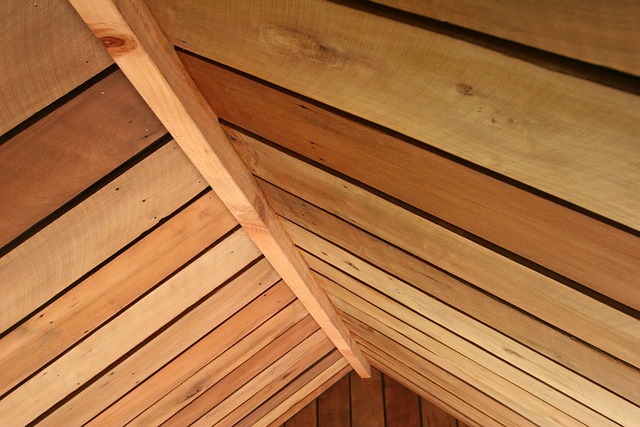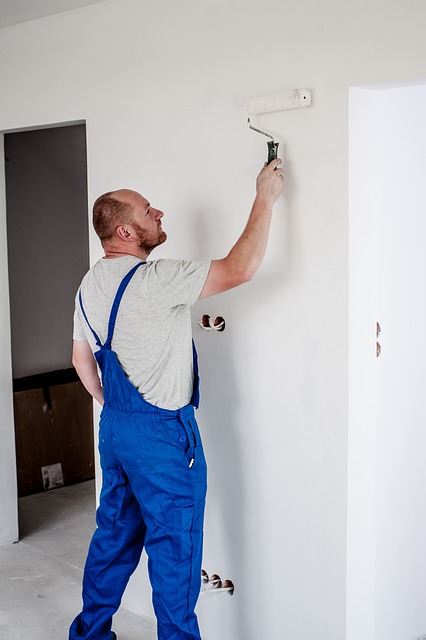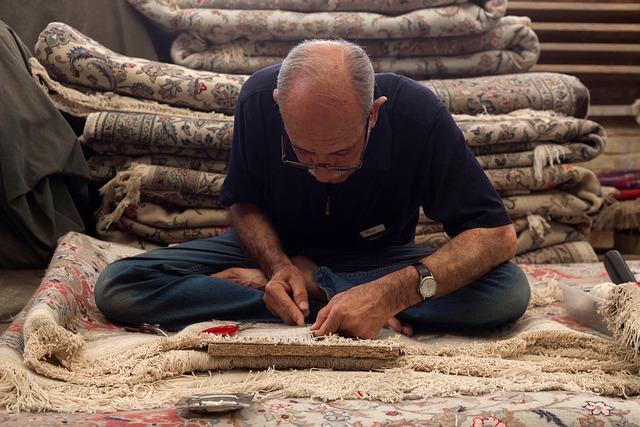Soil instability poses significant risks to structures, with water variations, poor drainage, and geological factors like clay-based soils leading to settlement and structural damage. Foundation repair specialists address these issues through advanced techniques such as deep underpinning, soil reinforcement, and slush pile compaction. They use innovative methods like polymeric additives, soil nailing, and pile driving to stabilize diverse soil types, prevent costly repairs, and ensure structural integrity. Selecting suitable stabilization materials based on soil type is crucial, with experts considering moisture levels and expected load capacity. Foundation repair specialists also prioritize environmental stewardship, adhering to regulations and employing sustainable practices in soil stabilization projects. Successful case studies highlight their adaptability in urban and rural settings, while continuous maintenance and monitoring are vital for long-term stability. Future trends include the use of local resources, bio-based materials, and geopolymer technology, with foundation repair specialists leading the way in adopting these advancements for enhanced performance and cost savings.
Soil instability can pose significant challenges for structures and infrastructure, making comprehensive stabilization essential. This article explores a multifaceted approach to tackling this issue, from understanding the root causes—such as poor soil conditions and environmental factors—to advanced techniques employed by foundation repair specialists. We delve into eco-friendly materials, case studies showcasing successful projects, and future trends shaping the industry. By employing expert strategies, property owners can ensure stable foundations for years to come, with a focus on the key role played by Foundation Repair Specialists.
Understanding Soil Instability: Common Causes and Effects

Soil instability is a significant concern for many areas, especially those with historically unstable ground or upcoming construction projects. Understanding the common causes and effects of soil movement is crucial when it comes to foundation repair. One of the primary triggers is water—both its presence and absence can cause soil to expand or contract, leading to uneven settling and structural damage over time. This phenomenon, known as swelling or shrinkage, can be exacerbated by factors like poor drainage, excessive rainfall, or nearby bodies of water.
Another frequent culprit is the geological makeup of the soil itself. Certain types of soil, such as clay, are inherently more prone to shifting due to their high water content and tendency to harden when dry. Construction activities can also accelerate soil instability by disturbing the natural balance, especially in areas with existing cracks or weak spots. Foundation repair specialists often address these issues through specialized techniques like deep underpinning, where additional support is inserted beneath the structure to stabilize it against disruptive soil movements.
The Role of Foundation Repair Specialists in Soil Stabilization

Foundation repair specialists play a pivotal role in soil stabilization, addressing underlying issues that can compromise structural integrity. They employ advanced techniques and technologies to assess and mitigate problems like settlement, heave, or shifting soils, which often result from poor initial soil preparation, inadequate drainage, or nearby construction activities. These experts not only fix existing damage but also implement long-term solutions to ensure the stability of buildings and infrastructure.
By specializing in soil stabilization, foundation repair specialists contribute significantly to the longevity and safety of structures. They offer expertise in various methods, including deep foundations, soil reinforcement, and slush pile compaction, tailoring their approach to specific site conditions and project requirements. Their work is crucial for maintaining the structural integrity of buildings, preventing costly repairs, and safeguarding investments in real estate.
Advanced Techniques for Effective Soil Stabilization

In the realm of soil stabilization, advanced techniques have emerged as game-changers, especially for foundation repair specialists. These innovative methods go beyond traditional practices, offering effective solutions for challenging ground conditions. One such technique involves the use of polymeric additives, which, when mixed with soil, enhance its strength and stiffness. This process not only improves the structural integrity of the soil but also provides a long-lasting solution, making it ideal for unstable terrain.
Additionally, modern technology has introduced mechanical stabilization methods, such as soil nailing and pile driving. These techniques involve the strategic placement of reinforcing elements like nails or piles to stabilize slopes and prevent erosion. Foundation repair specialists leverage these advanced tools to tackle complex projects, ensuring the safety and longevity of structures built on varied soil types.
Choosing the Right Materials for Soil Strengthening

When it comes to soil stabilization, selecting the appropriate materials is a crucial step for foundation repair specialists. Different soil types require specific solutions, and understanding the unique characteristics of each site is essential. For instance, sandy soils might need amendments to increase their clay content for better compaction, while clay-rich soils may benefit from organic matter or lightweight aggregates to enhance drainage and reduce shrinkage.
Foundation repair experts should consider factors like soil structure, moisture content, and expected load capacity when choosing materials. Common options include geotextiles, cementitious mixes, and specialized polymers. Geotextiles provide reinforcement and filter fines, improving soil stability. Cementitious mixes, such as high-strength concrete or soil-cement stabilizers, offer long-term strength and durability. Specialized polymers can swell upon contact with water, creating a cohesive network that strengthens loose soils.
Environmental Considerations in Soil Stabilization Projects

In any soil stabilization project, environmental considerations are paramount. Foundation repair specialists must adhere to strict regulations and best practices to minimize ecological impact. This includes careful assessment of the site’s biodiversity, water tables, and surrounding vegetation. Sustainable methods, such as using eco-friendly materials and employing techniques that preserve topsoil, are essential in these projects.
The choice of stabilization methods should also factor in the region’s unique climate and geological conditions. For instance, areas prone to heavy rainfall may require different solutions than arid regions. Foundation repair specialists play a crucial role in balancing structural integrity with environmental stewardship, ensuring that soil stabilization enhances rather than compromises the local ecosystem.
Case Studies: Successful Soil Stabilization Projects by Foundation Experts

Foundation repair specialists around the globe have successfully tackled a variety of soil stabilization projects, showcasing innovative techniques and best practices. In urban areas, where space is limited and structures are dense, experts often face challenging conditions. A notable case study involves a major city center where sinking soil caused significant structural damage to historic buildings. Foundation repair specialists employed a deep foundation solution, utilizing piles and a reinforced concrete wall system to stabilize the site. This project not only halted further subsidence but also preserved the architectural integrity of the surrounding landmarks.
Another successful example is a rural area plagued by expansive clay soils, leading to frequent road heaving and infrastructure damage. Foundation experts implemented a soil stabilization technique known as cementation, where a cement-based material was mixed with the native soil to improve its strength and reduce movement. This cost-effective solution has significantly improved the region’s transportation network, ensuring safer and more reliable roads for local communities. These case studies highlight the expertise and adaptability of foundation repair specialists in tackling diverse soil stabilization challenges.
Long-Term Maintenance and Monitoring for Stable Foundations

Ensuring long-term stability for your soil stabilization project is paramount, especially for commercial or industrial properties where the stakes are high. Foundation Repair Specialists emphasize the importance of ongoing maintenance and monitoring to prevent future issues. Regular inspections, for instance, can identify subtle shifts in soil composition or structural changes that might indicate underlying problems. Proactive measures like moisture management, drainage improvements, and regular re-compaction can significantly extend the life of your stabilized soil foundation.
By establishing a comprehensive maintenance plan, you not only safeguard against costly repairs but also ensure the longevity of your investment. Foundation Repair Specialists recommend customizing monitoring protocols based on factors like local climate, soil type, and the specific stabilization methods used. This ensures that any potential issues are caught early, allowing for swift corrective actions before they escalate and compromise the structural integrity of buildings or critical infrastructure.
Future Trends in Soil Stabilization Technology

Soil stabilization technology is constantly evolving, driven by advancements in materials science and engineering. Future trends suggest a shift towards more sustainable and environmentally friendly solutions, with an emphasis on using local resources and bio-based materials. For instance, the integration of natural binders like biomasses and polymers can enhance soil strength while reducing the carbon footprint associated with traditional stabilization methods. Additionally, innovative techniques such as geopolymer technology offer promising results in terms of durability and reduced environmental impact.
Foundation repair specialists are at the forefront of adopting these emerging trends, recognizing the potential for enhanced performance and long-term cost savings. As research progresses, we can expect to see more tailored stabilization methods designed to address specific soil types and structural requirements. These advancements will contribute to the development of resilient infrastructure, ensuring better protection against natural disasters and ground movement.
